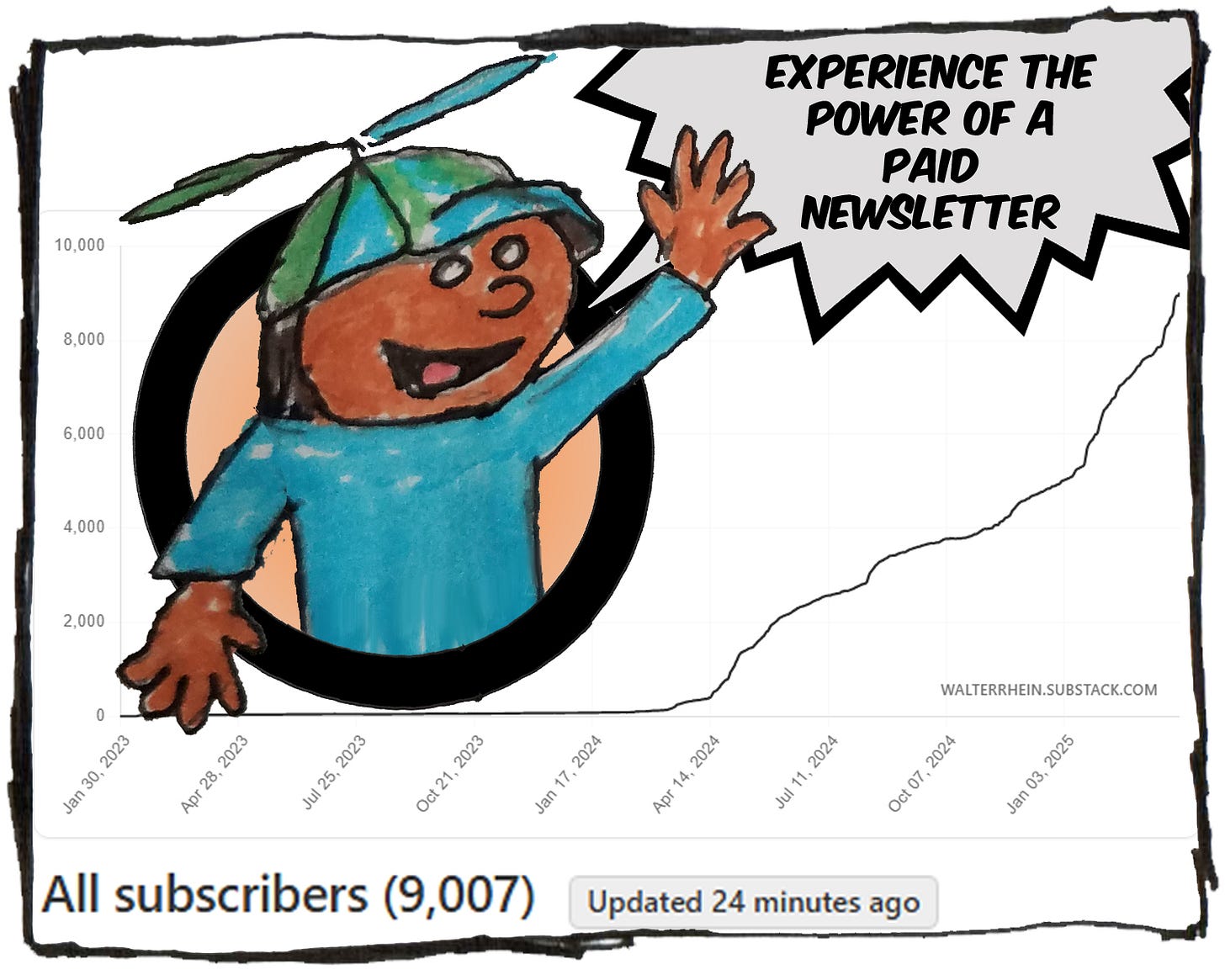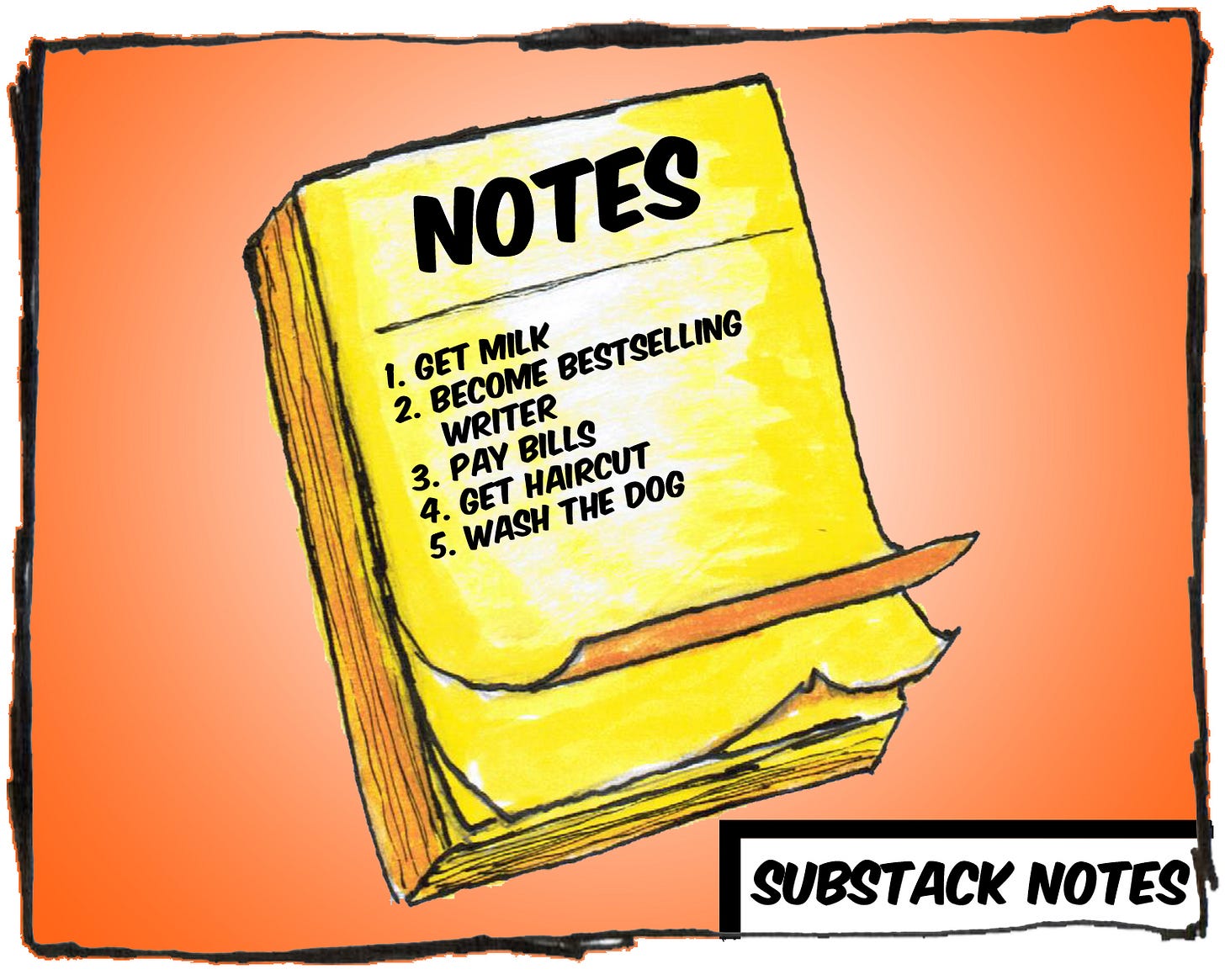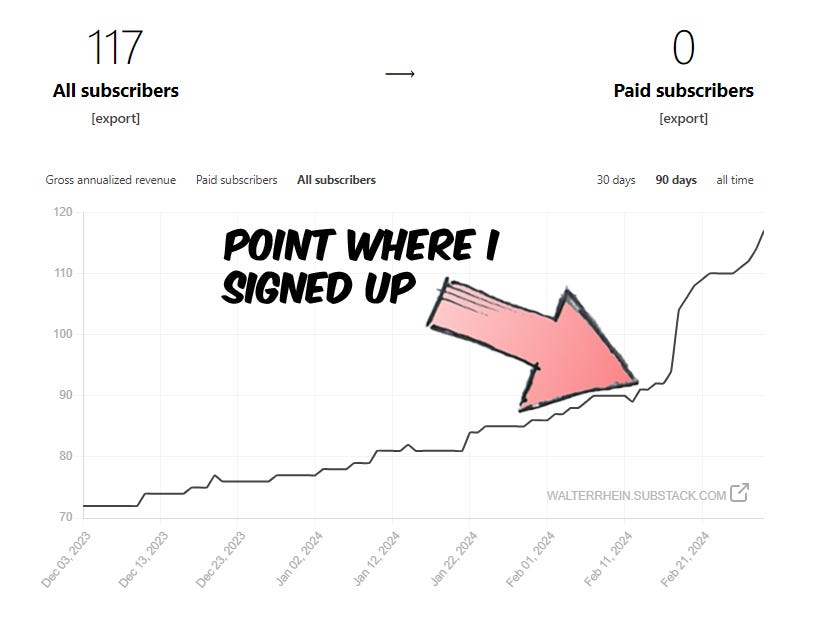What Everyone Gets Wrong About Growing Their Paid Newsletter
A quick start guide for writers who don't have time to learn about marketing
Hello Friends!
How often do you feel that your viewpoint is represented in the media? I often find myself watching interviews where powerful individuals are allowed to make nonsensical statements with little to no pushback.
The general public absorbs misinformation at an astonishing rate and to the detriment of us all. Rational, educated people are never allowed any time for a rebuttal.
Don’t forget to sponsor me, I super appreciate it! Here’s a discount!
The question then becomes, “How do I ensure my perspective is heard?”
We’re all aware that the majority of our information is filtered through a handful of major media conglomerates. A few decades ago, writers could wrest away a certain amount of attention by publishing a book. But today, book distribution channels are so controlled that you’d be fortunate to sell more than a dozen copies.
Furthermore, so many small presses are turning to print-on-demand models that the price of books has gone through the roof. A simple paperback might cost $20-$30, which all goes into production costs. The result is that writers are effectively censored because they’re forced to spend all their time working to support themselves rather than producing any work.
Fortunately, there is an alternative. When writers publish a sponsored newsletter, they cut out the middleman. Today, rather than spend $30 on a paperback that’s distributed through a billionaire owned web page, you can pay an author directly and receive daily articles in your inbox.
The system is much more efficient and merit based. In this article I’ll provide a simple overview of the growth strategies I’ve found to be most effective.
From zero to 9,000 subscribers
I published the first post on my newsletter on January 31st, 2023. As you can see in the above graphic, the newsletter went out to 1 recipient. Fortunately I had a 100% open rate.
One of the most common questions I receive from writers who are thinking about starting a newsletter is, “How do I get subscribers?”
Many people import existing email lists from other sources. But whether you start off with 10, or 100, or 1,000 subscribers, you still need to adopt good growth strategies. When I started my newsletter, I had developed a certain reputation on a variety of other platforms. I leveraged that to gain traction, but it still took about a year before I started seeing much of a response.
The first thing you have to accept is that it’s going to be slow sledding for your first year or so. It doesn’t matter what platform you use. Your audience will not find you until you’ve produced some work, so you have to resign yourself to shouting into the void.
Here’s the data page from one of my recent posts:
Everything is up except the open rate, which is to be expected. But this kind of growth does not happen overnight.
A streamlined list of newsletter growth strategies
Above all you have to remember to be patient. Ultimately, success comes by implementing good strategies over time. Don’t become discouraged because you don’t see the results you want in a week or a month. You have to keep at it and keep trying new things.
Here are some ideas to get you started:
Publish frequently (I do three posts a day)
Collaborate with other writers (interviews, guests posts, etc.)
Go paid from your first day
Respond to comments
Use Substack's notes (I publish 20-30 posts a day)
Record voiceovers and release them as podcasts
Do live streams
Write effective headlines
Follow and leave comments
Recommend similar publications
Of all these strategies, the two I’ve found to be most effective are collaboration and your frequency of publishing.
Collaboration
I dabbled with my paid newsletter for a whole year before I started taking it seriously. I published 3 articles a week and watched them languish. These articles were mostly made of up stories that I’d already published elsewhere, plus a sort of informal article about how my writing life was going that went out on Monday.
After a year of doing this, I was still sitting at less than 100 subscribers. I’ve been doing this long enough to know that my writing is at a professional level. However, I lacked the marketing background. I knew
’s reputation from other platforms, so I signed up to her newsletter for some marketing tips.Since then we’ve collaborated frequently. I’ve written guest posts for her newsletter and I’ve even helped her teach classes. She often shares tips and good practices for things you can do to increase your visibility.
I know that writers would “rather be writing,” but marketing is part of the game. These days, strategies change so fast that you simply have to dedicate a couple hours of your month to brainstorm new ways to get seen.
Today, there are a couple different writers I rely on for advice. I’ll often chat with
, , , , , and more to discuss new tactics that are effective.I don’t want to bog you down with the entire list of what I’m using today, because it might not be the same tomorrow. The big takeaway is the importance of collaboration. Find writers you trust and ask them what they’re doing. You need to take advantage of video conferences and stay up to date.
The key to succeeding as a writer is to show up every day.
Frequency of publishing
For the last few months, I’ve consistently published 3 items per day. I publish an article in the morning at 7AM CST. Then I schedule one of my voice overs as a podcast for around noon. The third thing might be an additional article, it might be an interview, or it might be an extemporaneous talk.
Using this model, I tend to get around 10,000 views a day:
I’ve been writing for a long time, so I have a huge backlog of unpublished or previously published stories. I realize that the idea of publishing 3 items per day can be daunting, but you can employ some good practices to streamline the process.
Whenever I write an article, I record a voiceover. Then, I upload the voiceover to the original article, and I upload it as a podcast. I then schedule both these items for different times. I keep track of this on a handwritten calendar (that’s illegible for most people, but I can read it—kind of):
I’ve got articles scheduled for the next 45 days.
It’s valuable to schedule the podcast for a month or so in the future because that allows your new readers to discover your old work. The whole key to being a successful writer is to keep earning on stories that have already been published.
You don’t have to write 3 articles a day, but you do have to come up with some sort of publishing schedule. I’ve found that you can’t really “tire out” your newsletter list. If you publish something people don’t want to read, they pass on it. The more you publish, the better the chance you have at connecting on something.
If you write it, the readers will come
The most important thing to keep in mind is that you’re not a “failure” as a writer just because you aren’t seeing the readership you’d imagined. I’ve been doing this for decades, and every now and then I write something that simply doesn’t find an audience.
It happens.
Then there are days I write something that gets a lot of reads but no comments. The problem with writers is that when they speculate on insufficient data they have a tendency to assume that every result is a “proof” of their ineptitude.
“Nobody’s reading my work, I guess I should just quit.”
You need to put that thought out of your mind. Today, there are so many tools to explore that you shouldn’t even have time for self doubt. It’s truly an exciting time to be a writer. Rather than rely on outdated distribution mechanisms, you can send your work directly to the cell phones of readers who will appreciate it.
Instead of supporting writers by purchasing expensive paperbacks, your readers can sponsor you directly! This is an exciting time and all that’s required to succeed is patience and persistence!
Don’t waste your energy on self doubt. Instead, try to seize the opportunities that are available to you!
“I'd rather Be Writing” exists because of your generous support. If you have the means please consider upgrading to a paid sponsorship. I have payment tiers starting at as little as twenty dollars a year. I'm so happy you're here, and I'm looking forward to sharing more thoughts with you tomorrow.
My CoSchedule referral link
Here’s my referral link to my preferred headline analyzer tool. If you sign up through this, it’s another way to support this newsletter (thank you).













My strategy for growing is similar:
Be patient - it takes a while
Be persistent - don't quit!
Be prolific - publish as much as possible
Be engaged - read and respond
Be flexible - four posts a week might work for a while but then you might need to do something different
Be grateful - say thank you!
Great tips, Walter. Thanks for breaking down what’s worked for you and how others can grow.